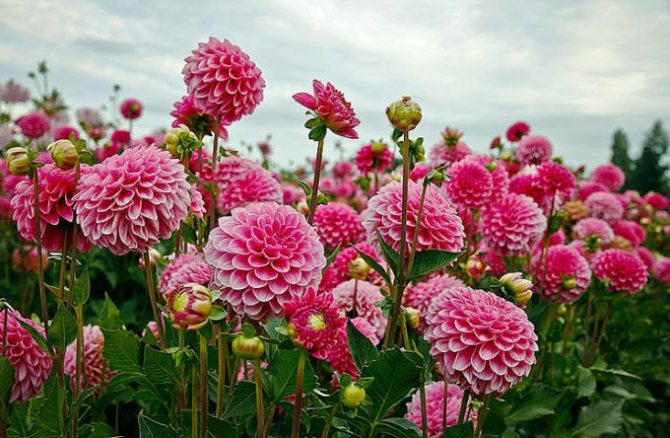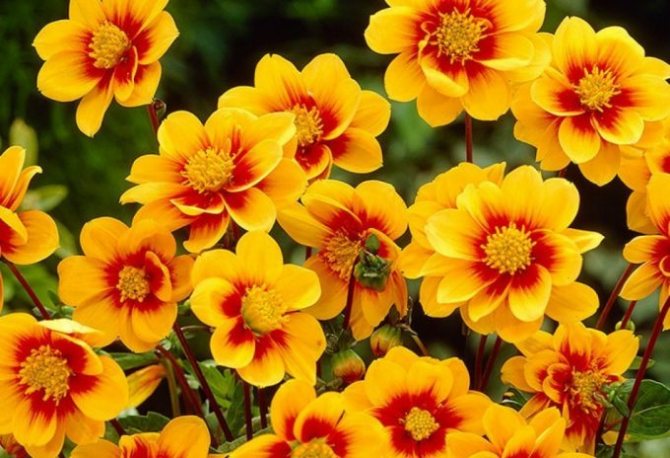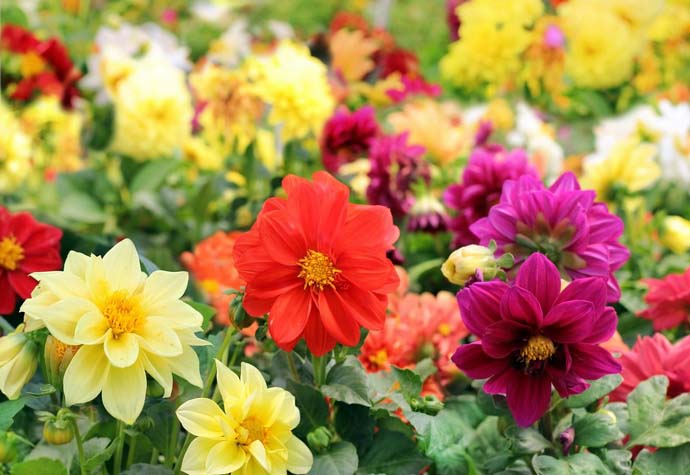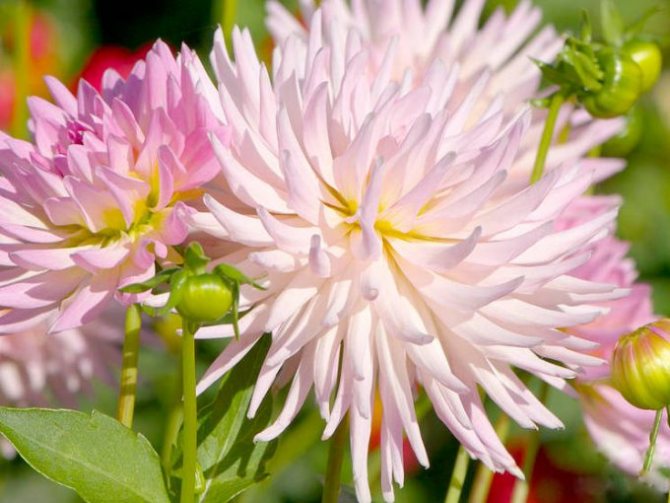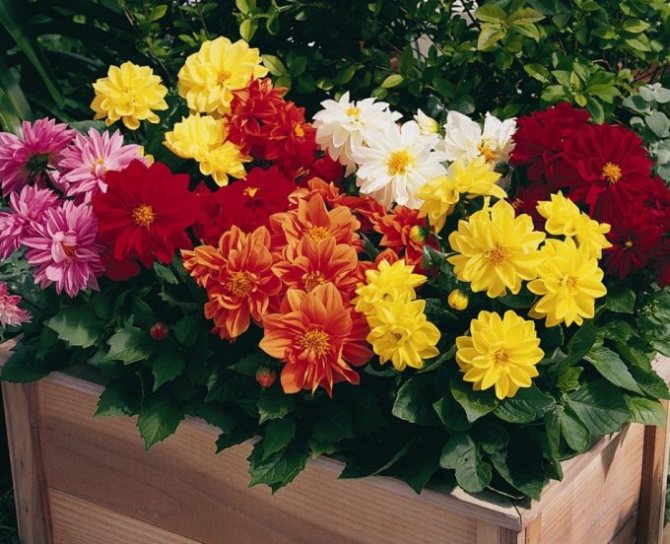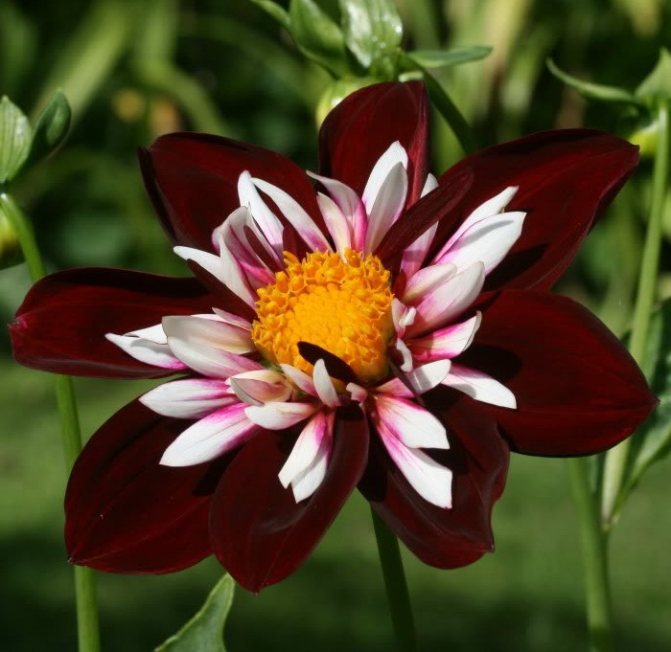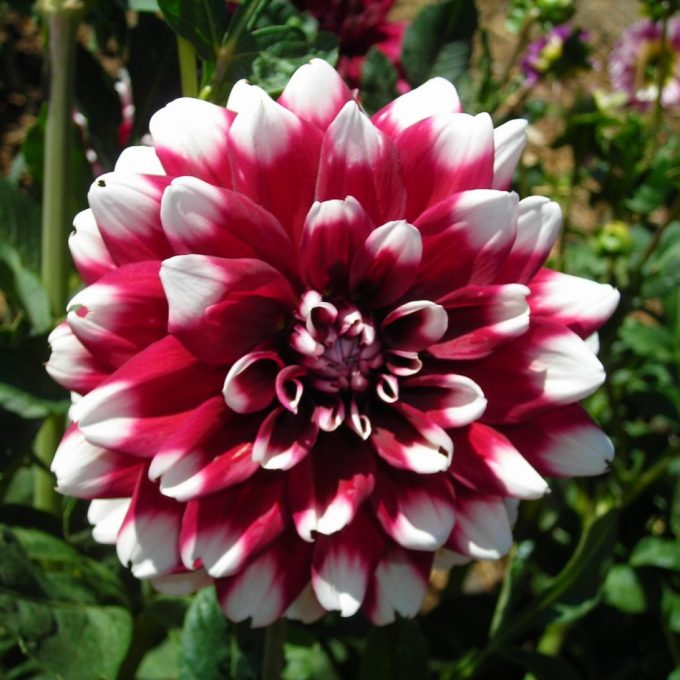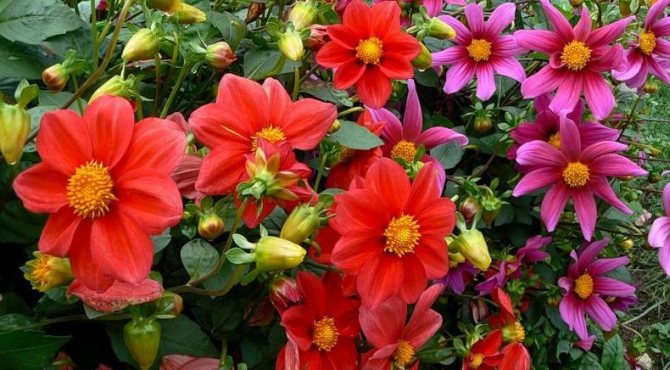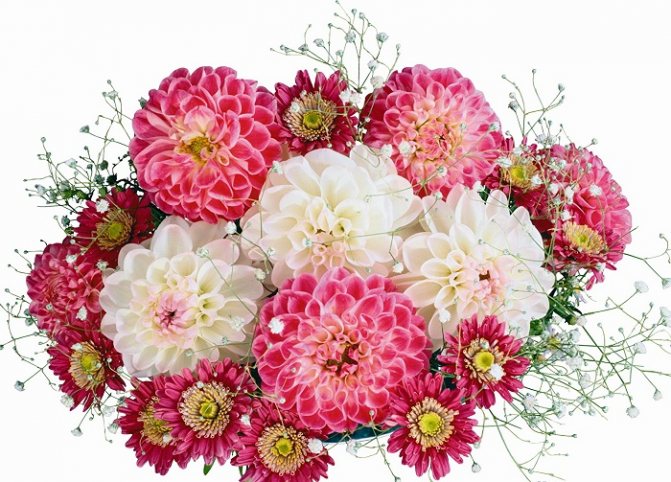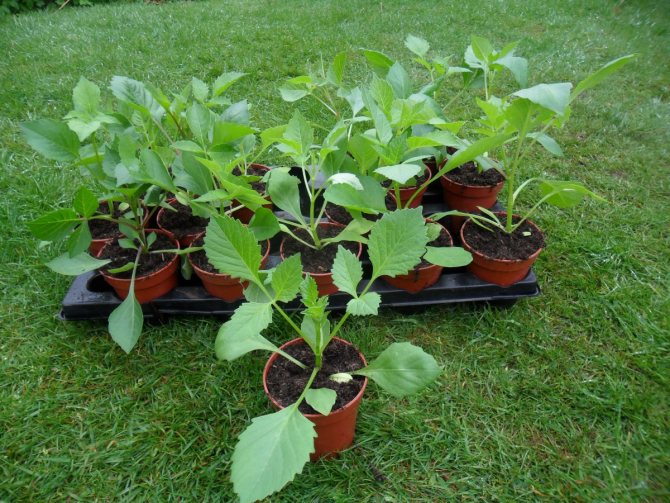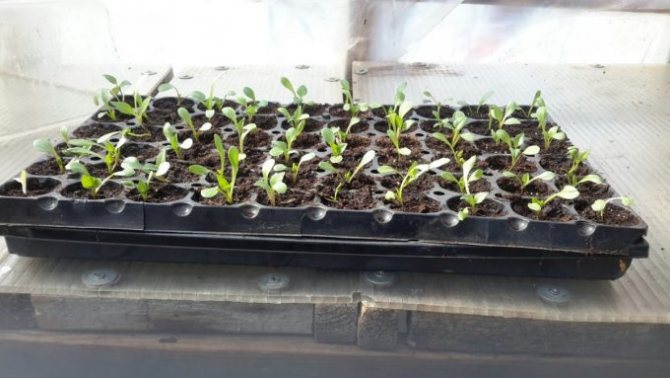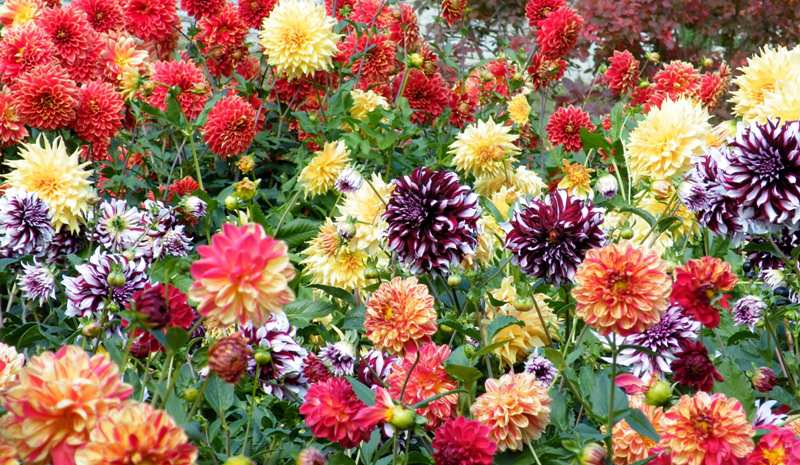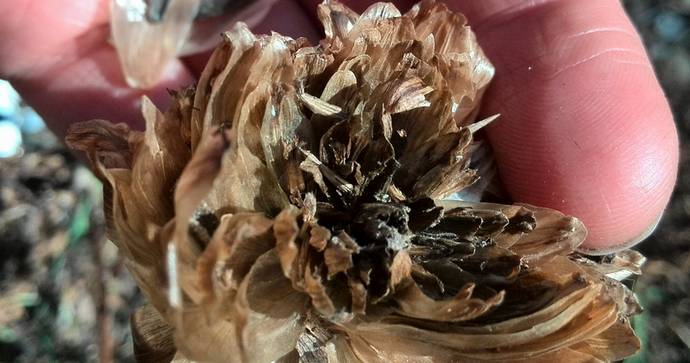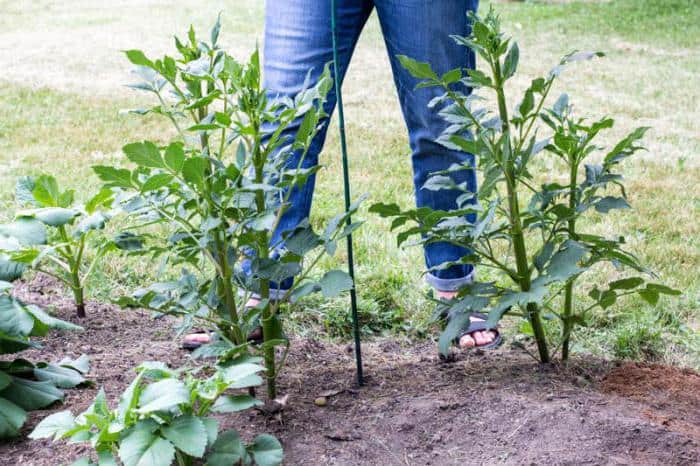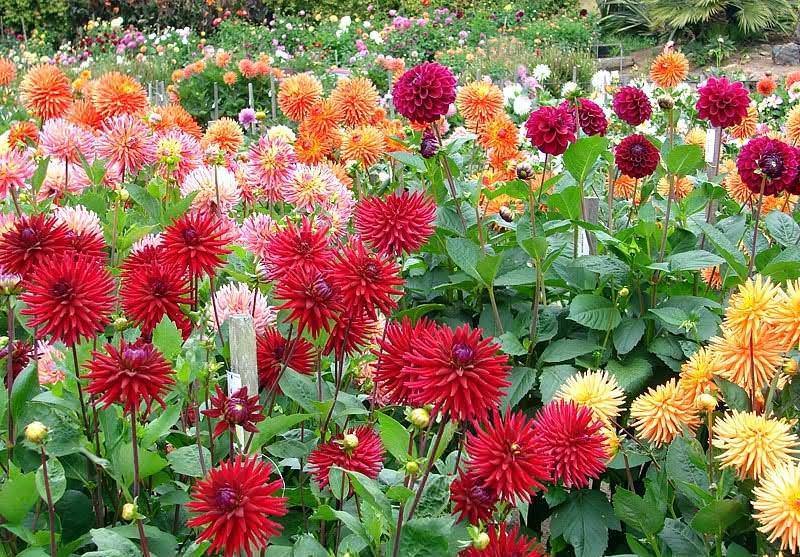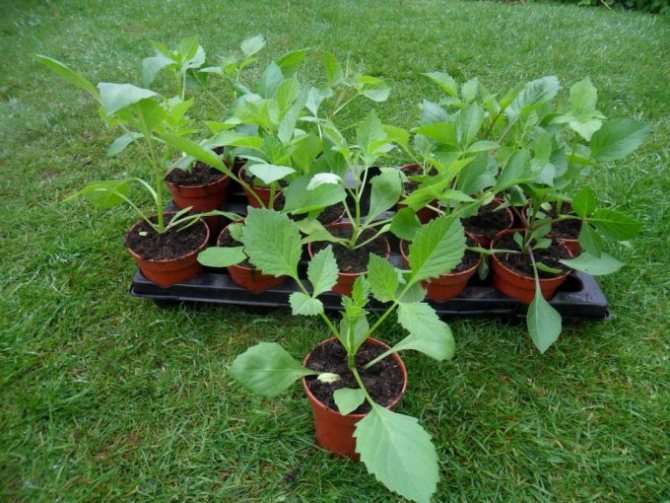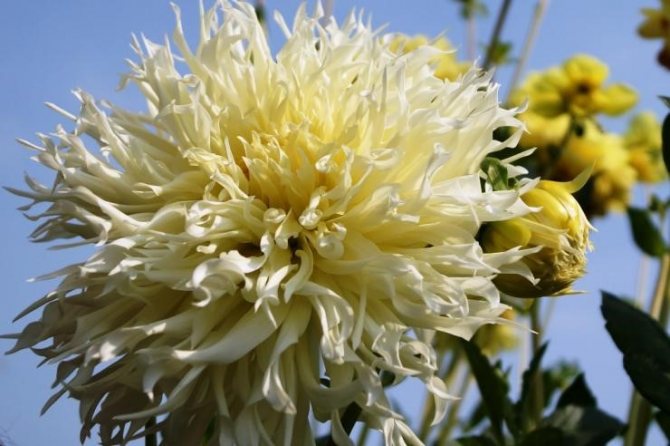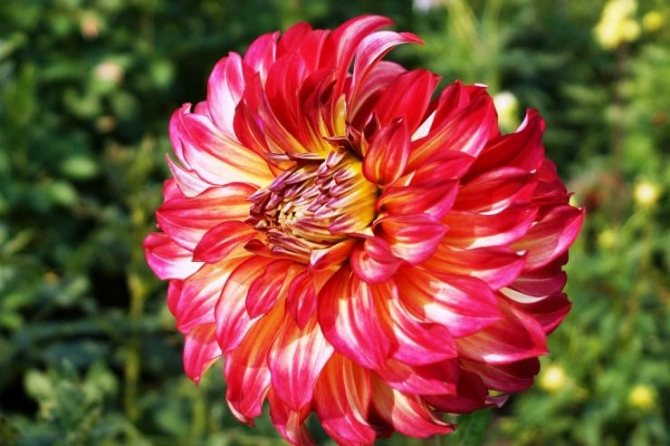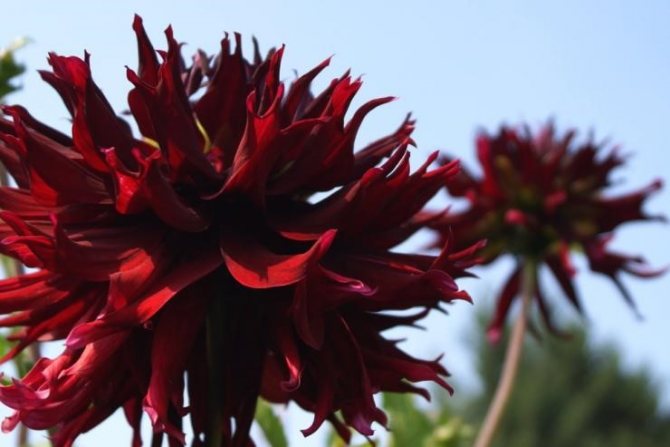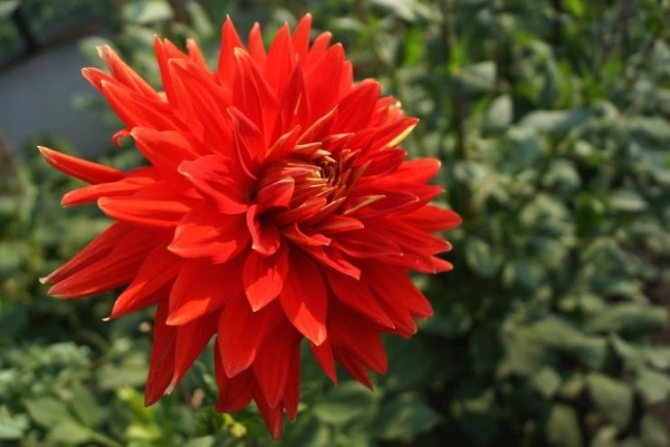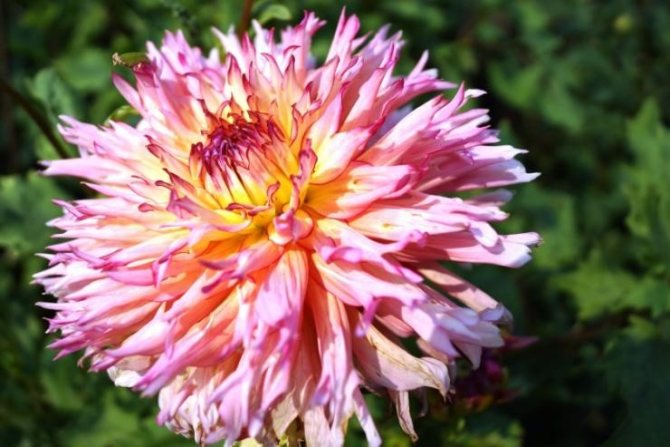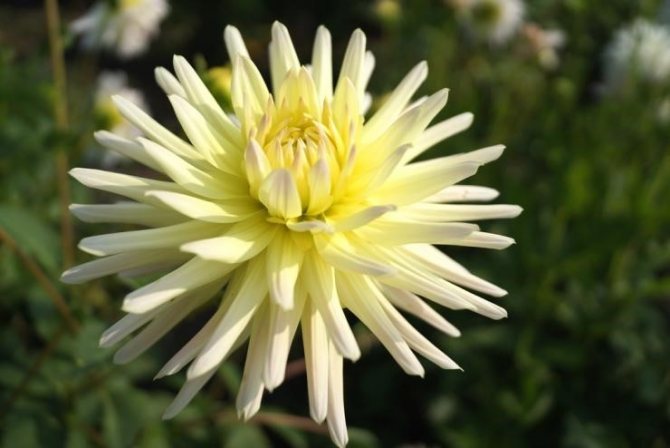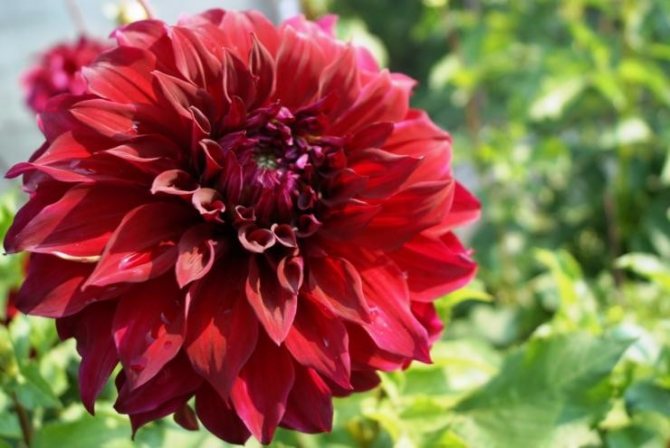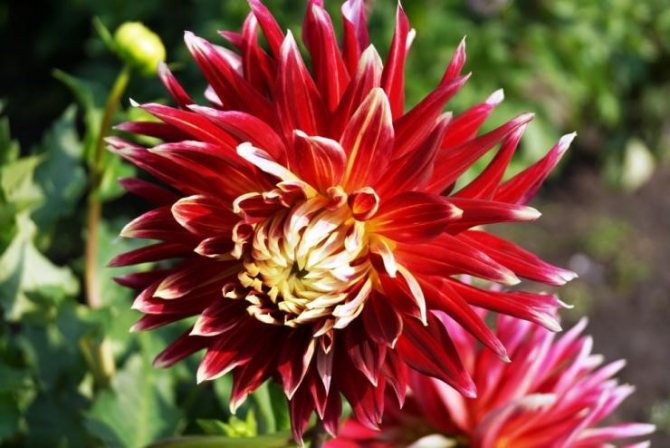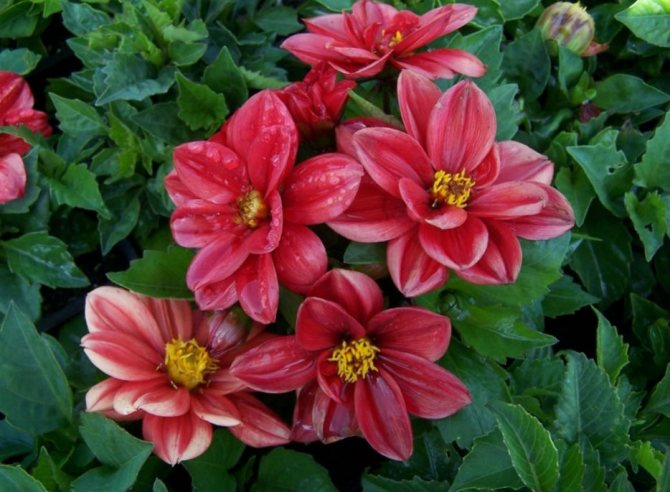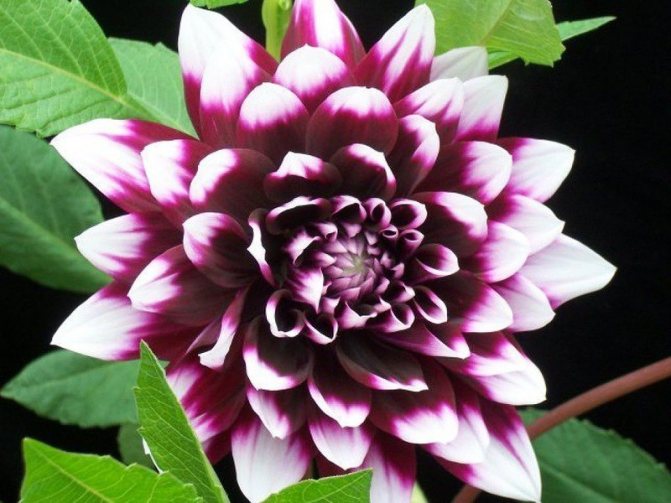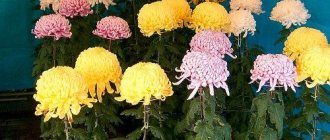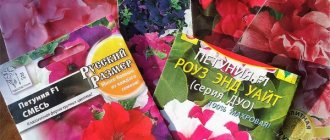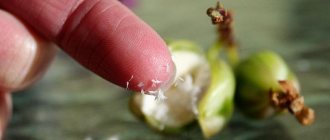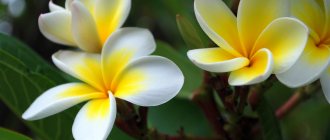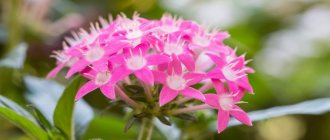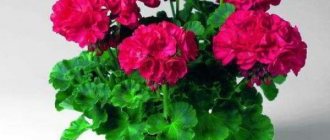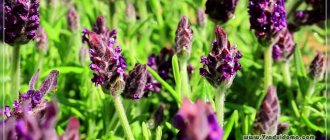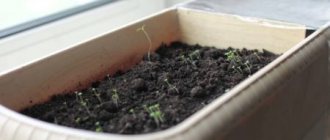While the autumn favorites of perennial dahlias hold their unshakable position, the former popularity of annual dahlias begins to return again. Easy to grow, unpretentious, these "alternative" dahlias allow with minimal effort to grow a bright decoration of the garden and pot arrangements. Growing dahlias from seeds, allowing you to admire the annual form of your favorite garden plant, is possible even for beginners. After all, this is one of the simplest crops for sowing seedlings and soil.
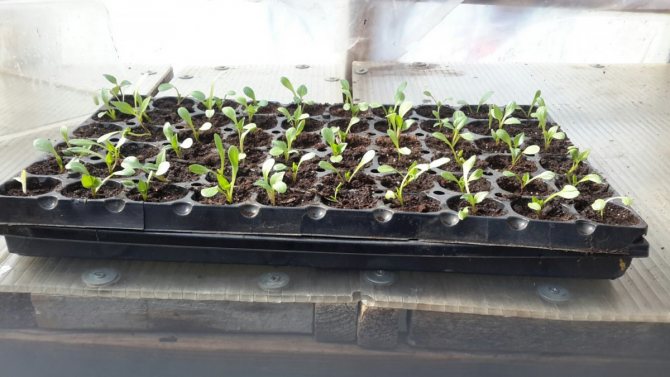
Growing dahlia from seeds.
Preliminary work
First you need to know that the cultivation of annual dahlias is divided into the following stages:
- Seed collection.
- Germination of dahlias.
- Seedling care.
- Planting flowers in the ground.
But if this is your first time growing dahlias, it is worth considering which varieties are best suited. For seedlings in 2020, seeds of low-growing dahlias are often bought. Such flowers can even be grown in apartment buildings. It has become very popular to plant dahlias on your balcony. If you have a flower bed, then medium-sized dahlias, which grow no higher than 60-65 centimeters, would be an excellent option. There are also varieties that reach up to one and a half meters in height. In general, the choice is huge, and everyone can pick up dahlias to their liking.
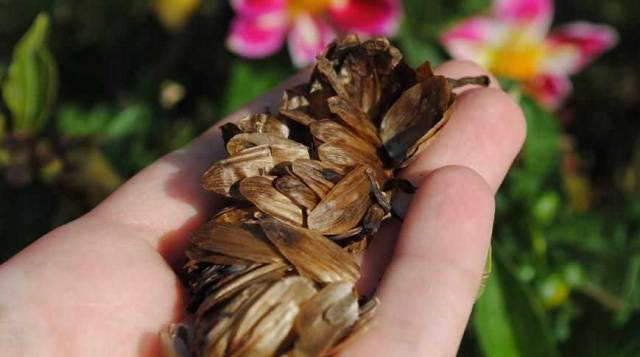

It is very common to find seed mixtures on the shelves of flower shops. These packages contain seeds of the same dahlia variety, but different colors. Such bright combinations will make your yard colorful and will cheer you up every time. And given that dahlias bloom for a very long time, you can enjoy such beauty even after other flowers in your garden have already wither.
For those who already grow dahlias, it will be easier and more economical to prepare seeds on their own. They are collected from completely dried flowers and stored in paper envelopes until spring. The only drawback of this method is that annual dahlias quickly degenerate, and the seeds may lose their properties over time. So from time to time you will have to change the seed.
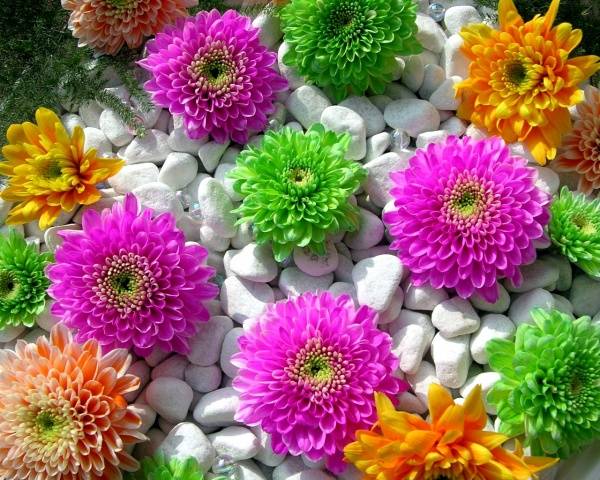

Annual dahlia - varieties
Having decided to plant low-growing annual dahlias on the site, you can safely purchase seeds marked "mix" in a checked place. And as a result, get a bright flower bed of similar in characteristics (bush height, flowering period and even color scale) and completely different outwardly dahlias. Those who prefer to know exactly what they will get in the end should pay attention to the following varieties:
- "Funny boys" - one has only to wait for the first buds of this variety, and it becomes clear that the name was not given to it in vain: bright, simple flowers with yellow centers look so cheerful and perky that they cause a smile against their will;
- "Vasilisa" - ideal for those who want to enjoy the splendor of dahlia without leaving their own home: a low, strong stem and early flowering periods make it possible to grow this variety on a balcony or windowsill;
- "Bright pompons" - a variety of July rounded dahlias, fully suitable for the design of garden paths and building facades;
- "Bambino" - miniature (up to 25 cm in height) terry dahlias with very large heads, blooming from mid-July to the very frost;
- "Opera" - large-flowered terry dahlias of delicate colors, ideal for framing flower beds.
Seedling preparation
The first step is to prepare the soil for sowing seeds. Preparation should begin in the fall. Humus, turf and sand are perfect for this. You can also use peat instead of humus. All components are taken in equal amounts and mixed until smooth. Next, we sow the mixture through a sieve to separate the stones. After that, the soil should be warmed up in the oven and treated with a manganese solution, this will help get rid of diseases and pests. The seeds themselves do not need to be processed.
For dahlia seedlings, low boxes with drains for excess liquid are suitable. Half of the container is filled with prepared soil. Before sowing seeds, the soil must be moistened with a sprayer. Then the seeds are sown at a distance of 3 centimeters from each other. The depth of the hole should be no more than 2 centimeters. Immediately after that, the planted seeds are placed in a warm place with good lighting, the air temperature should be around + 25 ° C.
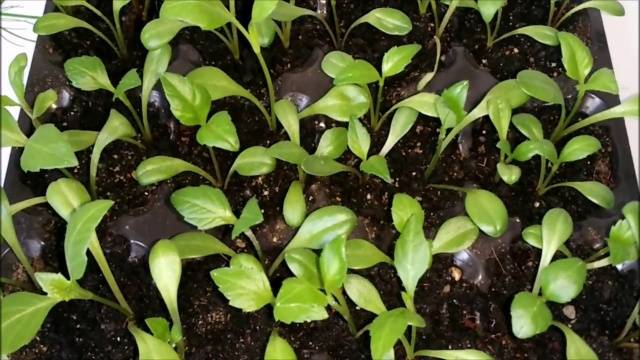

The first shoots should appear after 5-10 days. Now that the sprouts have sprouted, you need to remove the film from the boxes, and leave them again in a sunny place. In insufficient light, the sprouts will stretch. During this period, it is very important to monitor the humidity level. The soil should not dry out, but at the same time, a large amount of moisture can lead to diseases and destroy the seedlings. It is better to water the dahlia with a spray bottle.
You should start picking after the appearance of three to four leaves. You can move the sprouts into separate disposable cups or other containers convenient for you. They must be filled with soil from the box in which the seedlings grew. A hole must be made at the bottom of the cups so that excess liquid can drain.
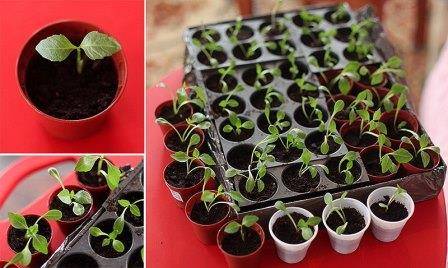

Winter storage of flower tubers
Preparation
In September, we mulch the root collar of flowers with peat or compost to prevent frost damage. After the bushes of flowers droop and darken, carefully dig up the plants. To do this, in dry weather, first cut off the stems at a height of 10 cm. After that, remove the root tubers from the ground and shake off the earth from them. Do not pull the tubers out of the ground by the cut stems, as the horse's neck can be easily damaged. Dug root tubers should not be brought directly into a warm room as they can dry out quickly. Before storing, dry the dahlias for 10 days in a cool, dry room. Then we sort them by type.
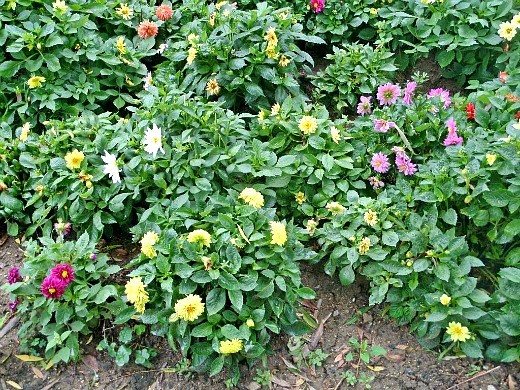

How to store in the basement
We store the planting material in wooden or plastic boxes, covered with paper or newspapers, in the basement. Top them up with dry sand or sawdust. The optimum temperature for the preservation of planting material is 6-8 degrees. We plant the root tubers of low-growing dahlias on summer cottages in the spring. At the same time, their flowering period will begin in July.
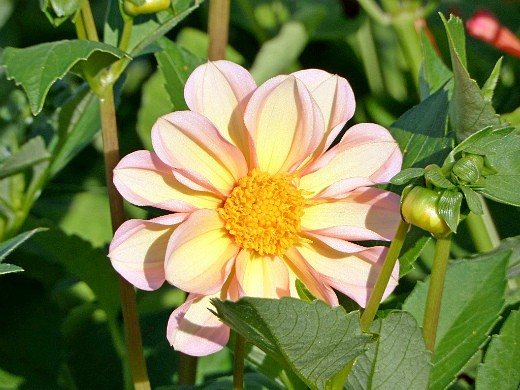

Seedling care
Healthy and strong seedlings will transfer planting into the ground much easier, and will also grow well and bloom quickly. For this, it is necessary to provide her with appropriate conditions and care. Probably the most important thing for seedlings is good lighting. With poor sunlight, the sprouts become too thin and stretch out. It is also necessary that the room with the seedlings is well ventilated. But it is important not to overdo it and prevent drafts.
Do not forget about regular watering of seedlings. The soil should not dry out, so you need to constantly monitor the level of moisture. Watering is necessary only as needed, if you see that the soil begins to dry out.
When to plant dahlias
Planting dahlias outdoors depends on the climate in your area. In the southern regions and the center, seedlings are planted from the third week of May. Then in June the plants will begin to bloom and delight the eyes of others. In the northern regions, the best time will be the second decade of June. The main thing is that the soil is well warmed up. Since every year spring can bring its own surprises, you should not be too focused on any dates. The time when to plant seedlings comes from the moment the frost completely stops.
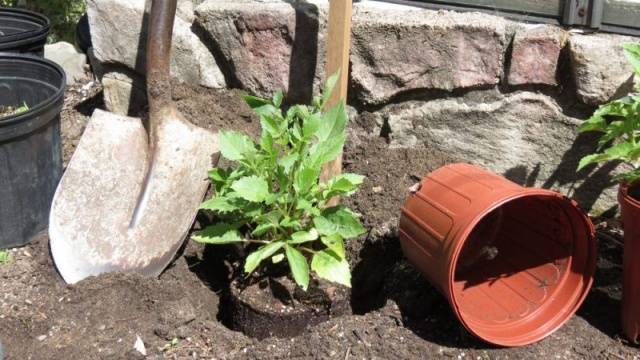

Description of low-growing dahlias
The popularity of dwarf dahlias came recently, after breeders were able to bring out beautiful miniature flowers. Such plants are resistant to unfavorable conditions of keeping, to diseases, they are excellent for growing in any containers.
Some growers call dahlias undersized curbs. Although this is a misnomer. According to the International classification, curb dahlias should be 60 cm high, and dwarf dahlias grow only up to 30 cm.
The height of dahlias directly depends on planting and growing conditions. One variety of flowers can reach up to 40-50 cm or its growth will not exceed 20 cm, it all depends on the circumstances. When growing flowers, you need to take into account the structure of the soil, its quality, the amount of fertilizing, watering, and the ecological situation. The better the conditions, the taller the plant will grow. And this does not affect flowering. With a large build-up of green mass, dahlia can bloom very poorly.
How to plant dahlias
You should be responsible when choosing a place for planting dahlias. It directly depends on how strong the bushes will be, and how quickly the flowering period will begin. To choose the ideal site, you need to consider the following factors:
- illumination level;
- soil composition;
- soil moisture.
It is important that the territory is spacious, and the seedlings are not crowded with each other. The place should be well lit. Dahlias don't like strong winds and shaded areas. Therefore, it is not advised to plant them near trees. In such conditions, the seedlings will stretch out and will not be able to form buds. As a result, there will be very few flowers and the bushes will look unhealthy. The place for the flower bed should not be deepened so that water does not stagnate there. It is better to plant dahlias on higher ground, this will help protect them from frost. Dahlias grow well in soil with a slightly acidic or neutral composition.
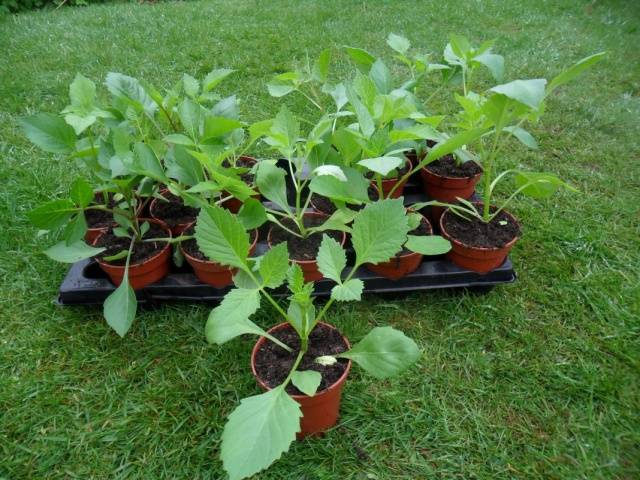

To easily remove the sprout from the glass, you need to pour plenty of water over it. After 2 hours, you can get the seedlings out of the containers and start planting. This method takes a little time, but keeps the root system safe and sound. Due to the injuries received, the plant may not take root in the open field.
The planted seedlings should be at a distance of about 20 centimeters for low-growing varieties. About 50 centimeters are left between medium-sized bushes, and about 70 centimeters between tall plants. As a fertilizer, humus or wood ash can be put in the hole.
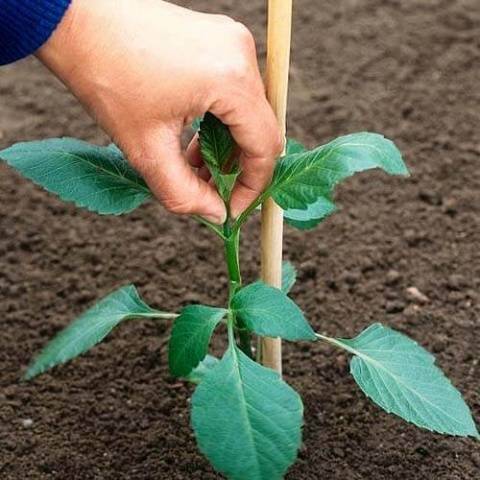

The land around the bushes is mulched, this will protect the plants from the cold, and prevent the flower garden from overgrowing with weeds. All these steps will help dahlias grow quickly and start blooming.
Planting dahlias in open ground
Before planting in the garden, the seedlings must be hardened. Plants begin to take out into fresh air, increasing the residence time. As soon as the threat of frost has passed, dahlias can be planted in a prepared place.
The site for planting Daliy should be sunny with light fertile soil. Humus or compost can be added to the planting hole, mixed with the ground. Two hours before planting, water the seedlings well. It is necessary to transfer the plants to the planting hole together with a lump of earth so as not to injure the roots. So the bushes will take root faster.
The distance between plants depends on the variety. For undersized dahlias, the gap is 30 cm, for higher species - 50 cm. Water and mulch the planted plants.
Caring for annual dahlias
Annual dahlias are undemanding in care, which consists in watering, weeding and feeding.
Watering
Dahlias do not like prolonged waterlogging, so you need to water the plants as the soil dries out. In dry hot weather, watering can be increased up to twice a week. After watering, it is advisable to mulch the soil. Mulching helps to retain moisture longer and does not form a crust on the soil surface.
Weeding
Weeding is necessary to keep the area around the dahlias clean. Weeds take moisture and nutrients from plants, and the access of light is impaired. Weeding is best done on the second or third day after watering, while loosening the soil. Loosening improves the air permeability of the soil and reduces moisture evaporation.
Top dressing
At the beginning of the growing season, our dahlias need nitrogen to build up green mass. Therefore, if organic fertilizers were not applied to the planting hole when planting seedlings, you can feed the plants with mullein infusions (2 liters of infusion per 10 liters of water). Top dressing should be carried out one week after transplanting. The day before fertilizing, the flowers must be watered.
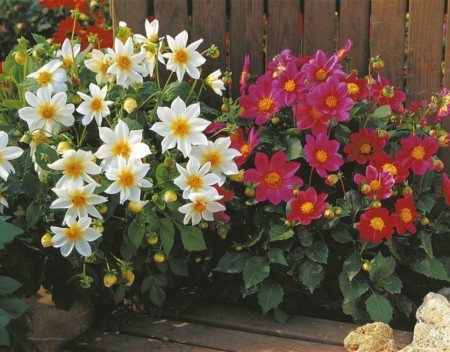

During the period of budding and flowering, dahlias need phosphorus-potassium supplements. Potassium sulfate and superphosphate or a compound fertilizer with a low nitrogen content are suitable. Two dressings are enough: during the budding period and at the beginning of flowering.
With an excess of nitrogen, the dahlia bushes begin to "fatten", i.e. to increase the green mass to the detriment of flowering. In addition, such plants are more susceptible to infection with fungal diseases.
Timely removal of wilting inflorescences allows dahlias to bloom longer, because the plant does not waste energy on seed ripening and begins to release new buds.
As you can see, caring for dahlias is ordinary and not at all difficult.
Growing dahlias in pots and flowerpots
For growing annuals in pots and flowerpots, dwarf varieties are excellent. Dwarf dahlia bushes grow no more than 40-50 cm. Flowering begins in June and continues until autumn frosts. Many low-growing varieties of dahlias have been developed, suitable for growing in pots and containers, which grow in a low compact bush with abundant flowering.
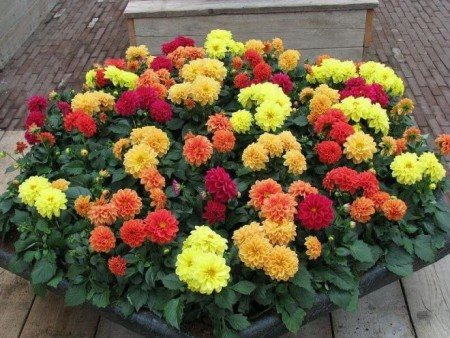

Pots should be spacious (at least 5 L) with good drainage holes for water to drain. At the bottom you need to pour a layer of expanded clay. Lightly breathable, neutral or slightly acidic soil is used for planting. Good results are obtained by adding hydrogel, vermiculite, perlite. These additives accumulate excess moisture and then release it as the soil dries out.
Before planting, it is advisable to spill the soil with a solution of potassium permanganate or phytosporin for the prevention of diseases. Taking care of dahlias planted in flowerpots is somewhat more difficult than in the open field. Care will consist in more frequent watering, top dressing, timely removal of faded baskets. Fertilizers are applied after watering once every two weeks. It is convenient to use complex liquid fertilizers. In August, all feeding is stopped.
In the fall, before the onset of frost, dahlias can be brought into a warm room, and they will delight with their flowering for some time.
How to save tubers
Annual dahlias grown through seedlings, under good conditions, manage to form tubers in a season. In the fall, after the first frost, these tubers can be dug up and stored in a basement or other room with a temperature of about 5 degrees.
Low-growing dahlias form small nodules that can dry out during storage. Therefore, it is better to store them covered with earth, peat or sawdust.Some gardeners leave the tubers for storage in pots, in which dahlias have grown all summer. But it must be borne in mind that after a couple of years, the tubers begin to degenerate, and it will be necessary to update the variety by sowing seeds.
The seeds can be harvested on their own, leaving a few faded baskets to dry completely. But dahlias grown from such seeds are likely to be unlike the mother plant.
Annual dahlias in garden design
Due to the variety of colors and shapes, annual dahlias can be planted both in separate groups, creating bright spots among the greenery of the garden, and together with other annuals. Here it is important to choose a good combination of colors of inflorescences and avoid excessive variegation.
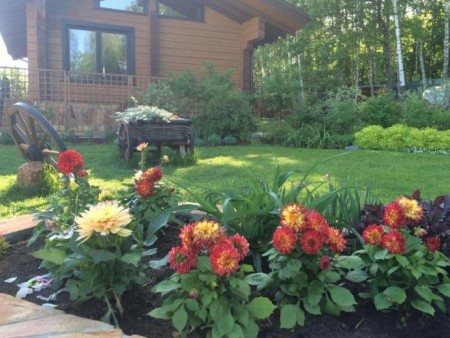

Dahlias in flower beds and mixborders go well with delphinium, phlox, lobelia. Asters, cosmos and zinnias in matching colors can also make a pleasant company.
Cactus and pompom dahlias that grow up to 1 m tall will look good in the background of a flower bed or mixborder. Ornamental sunflowers can be planted next to them.
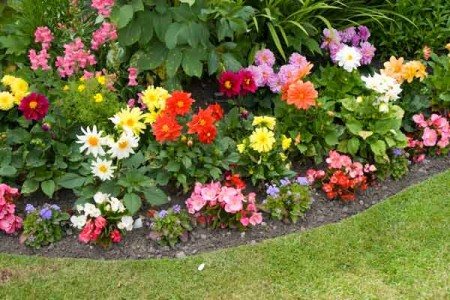

Dwarf varieties are suitable for decorating the border, rabatka and foreground of a mixborder. Low-growing marigolds and marigolds with their yellow-orange color palette will be a great addition to them. Dahlias planted in pots, flowerpots can be placed on terraces and verandas, near garden benches and gazebos.
Diseases and pests of annual dahlias
Annual dahlias can be affected by fungal and viral diseases. Most common: gray rot, white rot, fusarium, black leg, viral mosaic. Such pests as aphids, scoop caterpillars, slugs and snails love to feast on juicy green shoots and delicate petals of annual dalys. To protect your flowers from diseases and pests, it is important to follow the growing rules and carry out preventive plant treatments.
An interesting video about the care of annual dahlias
Other helpful articles about dahlias
- Varieties of perennial and annual dahlias. On this page you can familiarize yourself with the most different types of dahlias. There are small ones (which can be planted in pots or on the balcony), and there are large and simply huge ones.
- Growing perennial dahlias. Detailed advice on choosing a site, planting dates, preparing tubers, growing seedlings and much more.
- Dahlia diseases and pests. The most effective methods for controlling pests and treating diseases of your flowers.
- When to dig up and how to store the tubers. Dahlias must not only be dug up on time, but also preserved during the winter. How best to do this in an apartment, read this article.
Dahlia care
Dahlia is considered an unpretentious plant. It has high drought tolerance and does not like too wet soil. Thanks to these features, the dahlia needs to be watered only if necessary, if the soil begins to dry out. Even during the period of the most active growth, watering can be done only once a week. If it rains at this time, then even less often.
Top dressing is advised to be carried out every 2 weeks. Before flowering, only organic fertilizers can be applied, for example, mullein infusion. Add 1 liter of mullein to a bucket of water, and water the dahlias. One bush will need 1.5 liters of infusion.
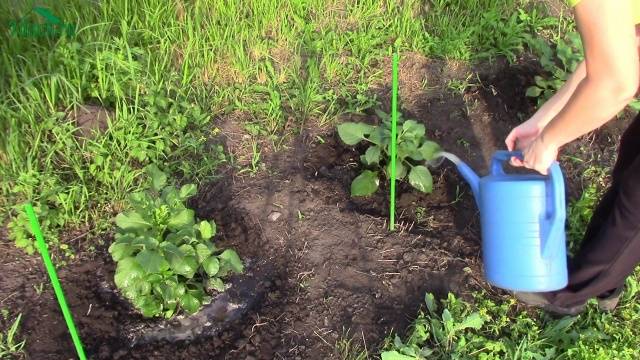

When the plants begin to bloom, you can apply mineral fertilizers. Phosphate and potash fertilizers are best. The solution is prepared according to the instructions. Such feeding is also carried out 2 times a month.
Of course, from time to time the soil needs to be loosened and weeds removed. This routine maintenance promotes good air flow to the root system. If the summer is dry, you can huddle the bushes, then the moisture will last longer.
How to grow dahlias from seeds?
Dahlias
- beautiful perennial flowers, bloom for a long time and are unpretentious in care.
Let's consider in detail: how to grow dahlias from seeds
when to sow seeds, how to care for dahlia seedlings before planting in open ground.
Everyone knows that dahlias are perennial flowers, and it is necessary to dig up the tubers every autumn and store them all winter until spring in a cool room.
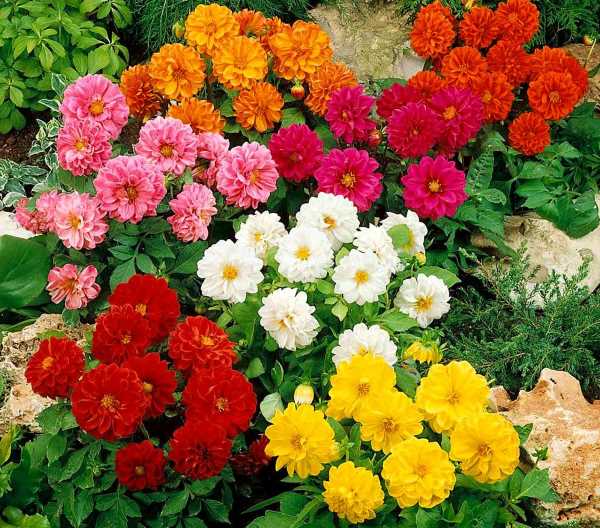

But there is also an option for those who do not want to mess with tubers or simply do not have a cool place to store them - this is growing dahlias by seeds
as an annual crop.
Landscaping - annual dahlias
Beds with annual dahlias delight the eye with the lush brightness of multi-colored buds. These flowers can be used to implement almost any design ideas: borders, mixborders, flower beds and flower beds, and simply decorate slopes with them. For group plantings, low-growing varieties are traditionally chosen, for single ones - tall ones. The peculiarity of this plant is such that it can be grown both as an annual (sowing with seeds) and as a perennial plant (digging out a tuber for the winter).
In order for dahlias to become a full-fledged decoration of the site already at the beginning of summer, they practice the seedling method of growing this plant. Annual dahlias, planting and caring for which began with sowing directly into the flower garden, reveal their potential at the end of summer, when most other garden plants have already faded. By combining both of these methods of cultivating dahlias, you can admire their lush and vibrant flowering throughout.
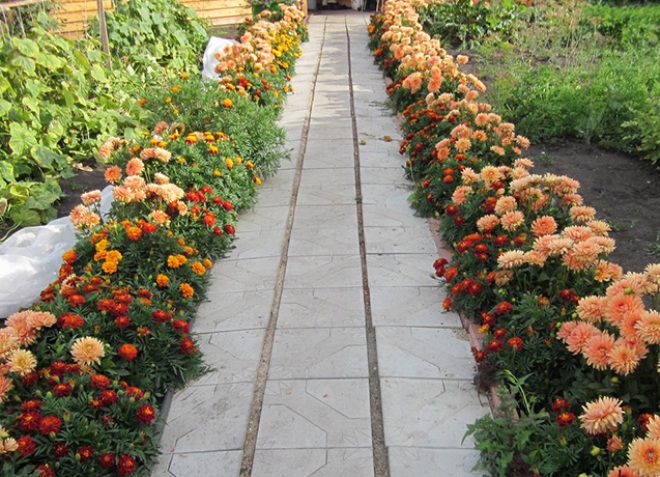

Growing seedlings of dahlias
Decide on the choice of the dahlia variety you like. The seedling boxes should be spacious so that the plants do not interfere with each other.
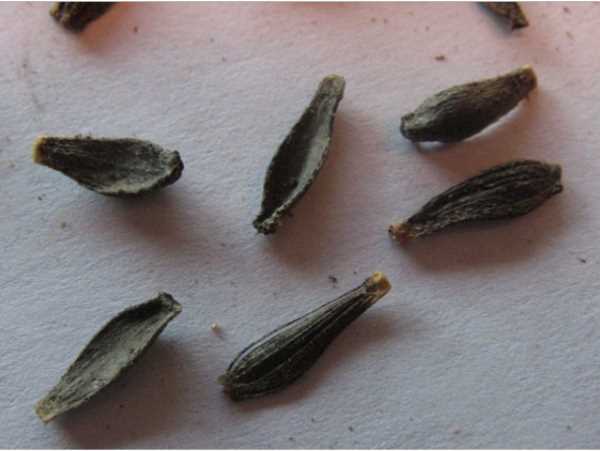

The process of sowing seeds is no different from sowing other annuals. Dahlia seeds
quite large, so it is easy to sow them.
First, in a container with earth, mark shallow grooves (up to 0.5 cm deep), at a distance of 3 cm from each other.
We spread the seeds into grooves, maintaining a distance of 3-4 cm between them.
Spray crops from a spray bottle and sprinkle with a thin layer of sand (sand will help to avoid the black leg at the initial stage).
Cover the seedling box with foil and place in a warm place with a temperature of 25 degrees. Ventilate the garden bed every day to avoid moldy soil.
The first shoots will appear in 4-5 days. Remove the film and put the box on a light windowsill. So that the seedlings do not stretch out, they must be kept in the light.
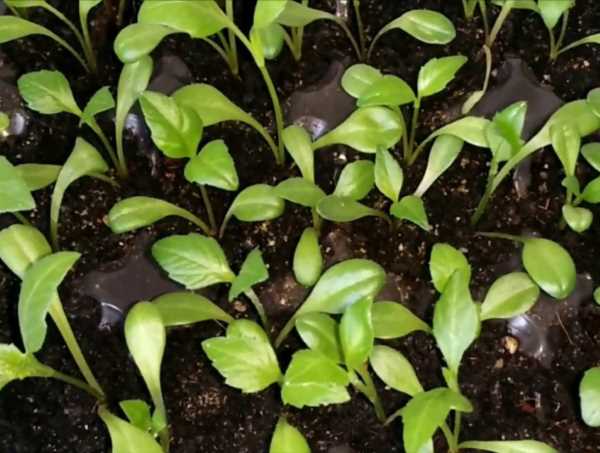

When the seedlings grow up, in the phase of 2-3 true leaves, it is necessary dive into separate cups
or pots. When picking, deepen the sprouts to the cotyledonous leaves.
2 weeks after transplanting, feed the seedlings with complex mineral fertilizer. With the further care of the seedlings, until the very planting in the ground, only timely watering is needed.
Dahlias are more drought-resistant plants, therefore they often suffer from excess moisture than lack of moisture.
When the plants are with 4 pairs of true leaves, it is advisable to pinch the tops. If you pinch the dahlias, they will bloom a little later, but magnificently. Well, if you do not pinch, they bloom earlier.
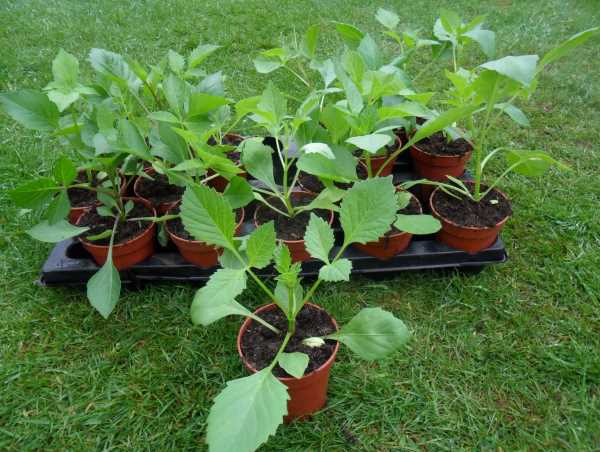

Dahlia seedlings grow very quickly and by mid-May they will be ready for transplanting to a permanent place in the open ground.
Temper 2 weeks before planting the seedlings.
In any case, you need to wait for the last spring frosts to pass.
The place for planting seedlings should be sunny, sheltered from the wind.
Video - Dahlias from seeds
Growing dahlias from seeds
will not be difficult. Be sure to decorate your flower garden with these wonderful perennial flowers.

